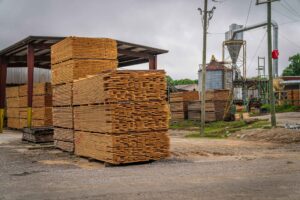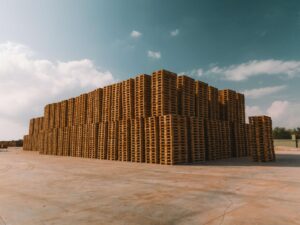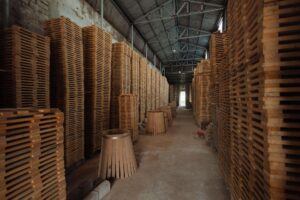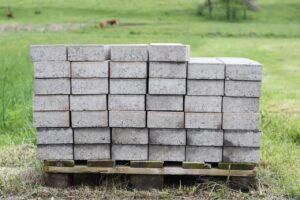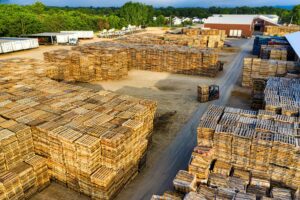Air pollution is a growing concern worldwide, affecting both indoor and outdoor environments. Poor air quality can lead to respiratory issues, allergies, and long-term lung damage. Bamboo charcoal, a natural air purifier, has gained popularity for its ability to absorb toxins, neutralize odors, and improve air quality. In this in-depth guide, we explore how bamboo charcoal purifies the air and benefits lung health.
1. What is Bamboo Charcoal?
A) Formation and Properties
Bamboo charcoal is produced by burning bamboo at high temperatures (600-1200°C) in a controlled environment.
It has a porous structure that enhances its ability to absorb pollutants and toxins.
Known for its high carbon content, bamboo charcoal acts as a natural filtration system.
B) Types of Bamboo Charcoal
Activated Bamboo Charcoal – Treated with oxygen to increase absorbency, commonly used in air and water purification.
Raw Bamboo Charcoal – Used in traditional medicine and home applications for detoxification.
Bamboo Charcoal Bags – Small sachets filled with charcoal granules, placed around the home for air purification.
2. How Bamboo Charcoal Purifies Air
A) Absorbs Airborne Toxins and Pollutants
Bamboo charcoal removes volatile organic compounds (VOCs) released from furniture, paint, and cleaning products.
Captures formaldehyde, benzene, and ammonia, reducing indoor air pollution.
Helps eliminate smog particles, beneficial for people living in urban areas.
B) Eliminates Allergens and Dust
Bamboo charcoal traps dust, mold spores, and pet dander, making it ideal for allergy sufferers.
Reduces indoor triggers for asthma, sinus infections, and respiratory issues.
C) Neutralizes Unpleasant Odors
Absorbs odors from smoke, cooking, pets, and garbage, rather than masking them like air fresheners.
Creates a clean, fresh-smelling environment without artificial fragrances or chemicals.
3. How Bamboo Charcoal Benefits Lung Health
A) Reduces Respiratory Irritants
Indoor air pollution can lead to chronic respiratory conditions like asthma and bronchitis.
Bamboo charcoal filters out fine particles (PM2.5) that can penetrate deep into the lungs.
B) Promotes Better Oxygen Absorption
Clean air leads to better oxygen intake, reducing lung strain and fatigue.
Helps improve breathing efficiency, especially for individuals with lung conditions.
C) Supports Detoxification
Activated bamboo charcoal is known to bind with toxins in the body when consumed in controlled amounts.
Some natural health practices use bamboo charcoal inhalers to support lung cleansing.
4. How to Use Bamboo Charcoal for Air Purification
A) Bamboo Charcoal Bags
Place small bags in bedrooms, living rooms, kitchens, bathrooms, and cars.
Sun-dry them once a month to reactivate their purifying properties.
B) Bamboo Charcoal Air Filters
Many air purifiers now incorporate bamboo charcoal filters for improved efficiency.
Can be used in HVAC systems to reduce indoor air pollution.
C) Bamboo Charcoal Houseplants
Some air-purifying plants come with bamboo charcoal-infused soil to enhance filtration.
Placing bamboo charcoal near plants helps absorb excess moisture and prevent mold growth.
D) DIY Bamboo Charcoal Humidifier
Adding bamboo charcoal to water in a humidifier helps filter out impurities while maintaining air moisture.
5. Bamboo Charcoal vs. Traditional Air Purifiers
| Feature | Bamboo Charcoal | Traditional Air Purifier |
|---|---|---|
| Chemical-Free | Yes | No (often contains synthetic filters) |
| Cost-Effective | Yes (Reusable for up to 2 years) | No (Requires frequent filter replacements) |
| Eco-Friendly | Yes (Biodegradable) | No (Plastic waste) |
| Odor Removal | Excellent | Varies by model |
| Allergen Removal | High | High |
6. Additional Benefits of Bamboo Charcoal
Dehumidifies air, preventing mold and mildew growth.
Improves sleep quality by promoting cleaner, oxygen-rich air in the bedroom.
Balances indoor air humidity, creating a comfortable living space.
7. Conclusion: A Natural Way to Breathe Better
Bamboo charcoal is a powerful, eco-friendly solution for purifying air, reducing respiratory issues, and promoting lung health. Whether used in bags, air filters, or DIY humidifiers, it provides a cost-effective and natural alternative to traditional air purifiers.

